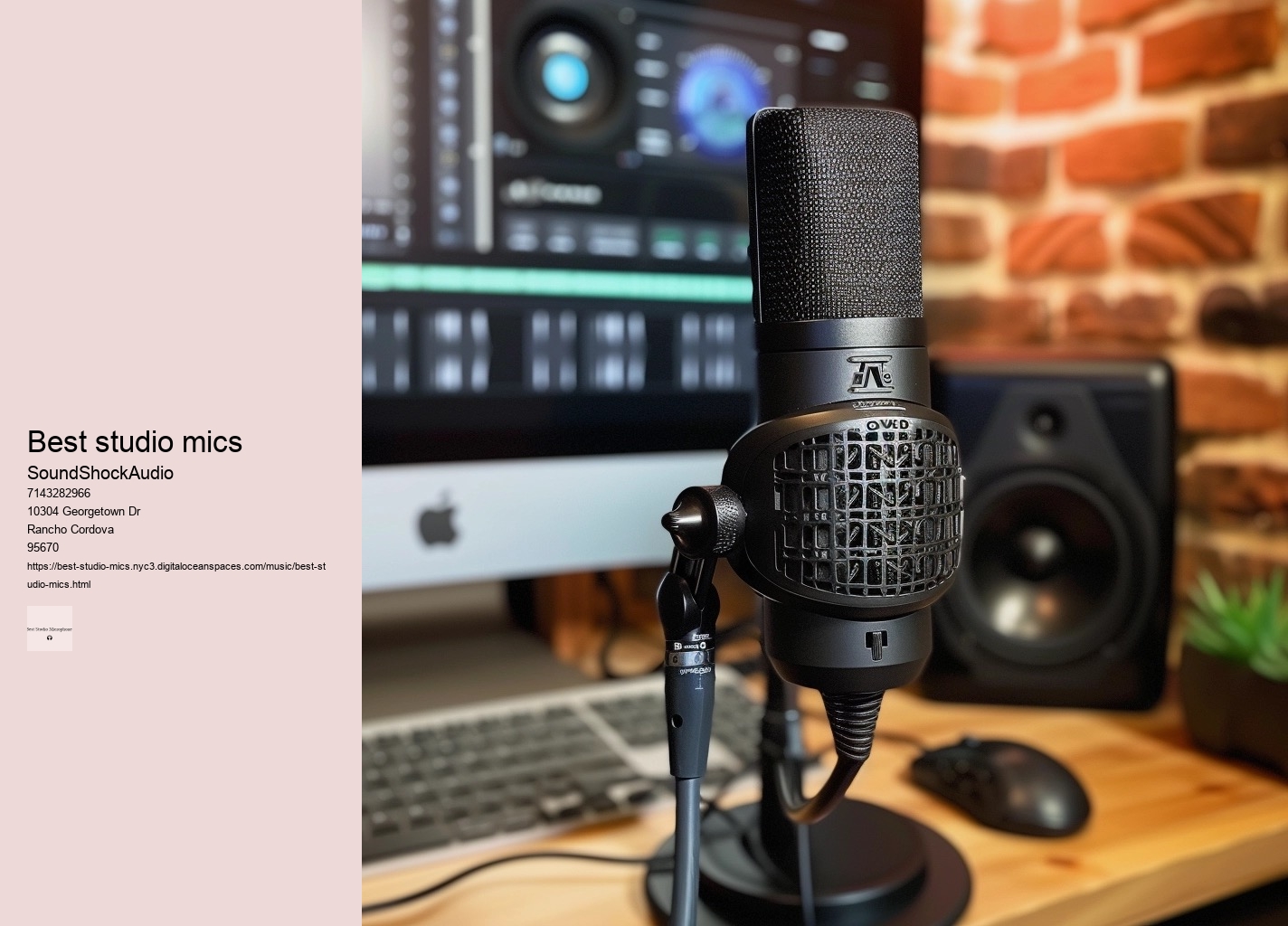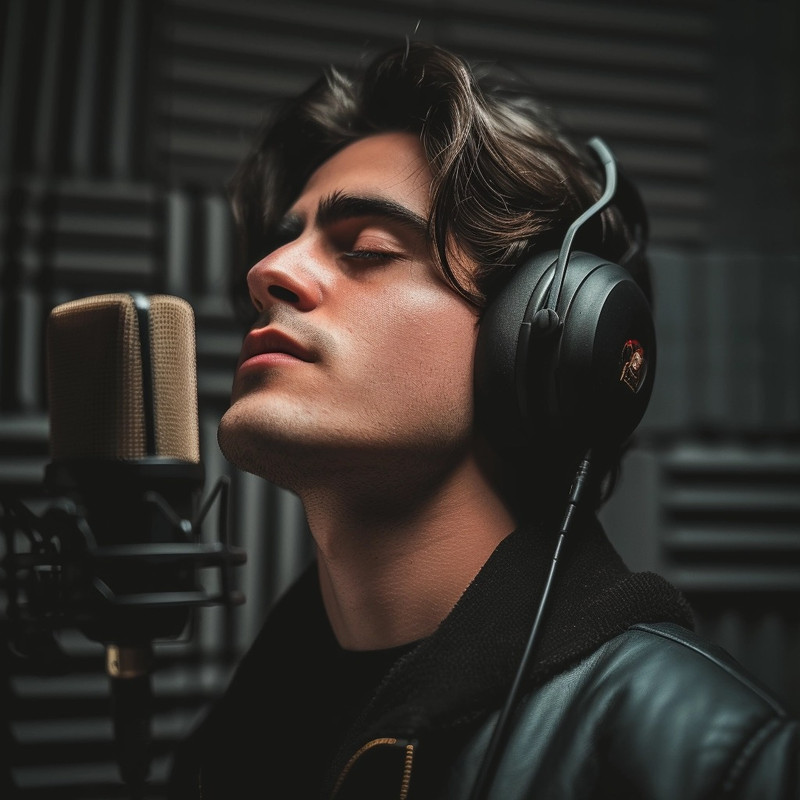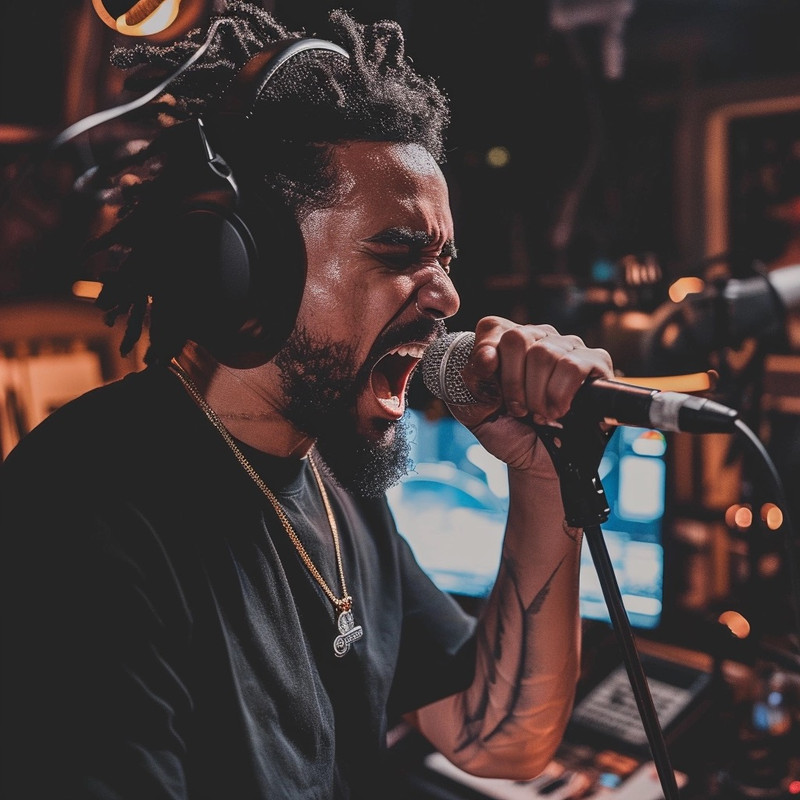

Check the polar pattern of a microphone before buying one. The angle at which the microphone receives sound waves also plays a crucial role in sculpting the sonic character of recordings. They have a clear and natural midrange and a top end that is open and natural.
This ribbon mic can handle higher SPLs while reproducing natural sound. The vast array of microphones available can be daunting, but focusing on certain characteristics will streamline the decision-making process.
Yet, following our unique selection method would lead us away from this industry favorite towards a less renowned alternative that may not deliver the same flawless recordings. Musicians recording acoustic instruments might lean towards small-diaphragm condenser mics due to their precise transient response and flat frequency response. To find out which microphone to buy, check out the best studio microphones on SoundShockAudio..
Vintage U47 microphones, if you can find them, are among the most sought-after pieces of studio equipment on the planet. The 47 FET was a huge hit in recording studios because it had the same sound as the 47 tube microphone, but with solid-state technology instead of valves.
XLR microphones are best suited to professional recording environments and more advanced home studios. In the article above, we have a list of many different cardioid-condenser mics. For those gravitating towards condenser microphones with contemporary engineering feats, the AKG C414 emerges as a formidable option.
They are a great choice for any recording scenario, including guitar cabinets, because of their durability, reliability and practical frequency response. Cables are rarely sung heroes—often overlooked but vitally important conduits carrying the lifeblood of sound from source to recorder.
Condenser mics have a wide range of frequency response. When paired correctly, they form an indispensable duo that lays down a solid foundation for capturing impeccable audio.
Best under $/PS2003. Its MkII response also shows a noticeable drop (6dB), around 5kHz. They also have a wider range of frequencies.
It captures the dynamics between quiet and loud and the harmonics unique to a valve amplifier. The Lewitt Pure Tube is also a favorite because of its low-noise flooring, which allows us to layer and stack vocals without worrying about adding hiss.
This sensitivity enables them to pick up a spectrum of frequencies that many other types cannot match. Find out more.
It’s not merely about having an excellent microphone but also about ensuring that each stage in the signal chain complements and enhances its performance. This is what will set you apart from the crowd. diaphragm condenser


Dabble with various accessories such as pop filters, reflection filters, and shock mounts; these tools can significantly alter your recording results by minimizing unwanted noise and vibrations. Conversely, distance creates space and airiness, often preferred for capturing natural acoustic instrument tones. Samson C01 features a heavy-gauge mesh grille, a gold plated XLR connector and LED monitoring.
The Role of Preamps and Audio InterfacesAchieving studio-quality sound is an art that relies heavily on the use of sophisticated equipment, with preamps and audio interfaces being central to this process. The Rode NT1-A presents itself as an affordable yet highly capable condenser microphone with a reputation for quiet operation thanks to its low self-noise level.
Dynamic mics are revered for their durability and ability to handle high sound pressure levels—ideal for drums and electric guitars. Omnidirectional mics capture everything around them equally; thus they're best in controlled studio environments.
This handbook, MIKED-UP – HOME RECORDING, from Shure, contains miking techniques, tips and tricks, and microphone basics for new producers as well as those who are looking to improve their skills. It captures all the details.
Lastly, aesthetic design may not directly influence sound quality but can inspire performers and enhance studio decor—never underestimate how ambiance impacts creativity! As you delve deeper into this auditory adventure, document your discoveries meticulously—what worked brilliantly for one session may serve as a starting point in another scenario. This meticulous crafting of acoustics prevents coloration that can be embedded into recordings by untreated spaces.
It’s the difference between an amateurish track and a polished recording that resonates with listeners. Stereo setup gives your recordings an authentic live feel.
Cookies are used to enhance your experience. Drop it on any page to edit static content.
There's also no high-frequency hyping or brittleness, which plagues microphones of this type. It's akin to building a house on shaky foundations; no matter how beautiful the design, it's vulnerable to collapse without solid groundwork.

This could be useful when setting up multi-miked kits. Audio-Technica AT2020 has a low-mass, wide-range diaphragm that allows it to record voices accurately. Brands like Neumann or AKG have set industry standards with models praised by audio engineers worldwide.
While professional studios boast high-end mics with price tags that soar into the stratosphere, there lies a treasure trove of entry-level microphones that debunk the myth that quality must come at an exorbitant cost. Figure-8 or bidirectional microphones have a dual-lobe pattern, picking up sound equally from both the front and back but not much from the sides.
At its most fundamental level, there are three primary categories of microphones: dynamic, condenser, and ribbon. In summary, while top-notch microphones are crucial for flawless recordings, it's paramount not to overlook the importance of a high-quality audio interface.
The SM57 is the perfect snare mic for guitars. However, they may not be suitable for a close-micing a 4x12 guitar amplifier cabinet.
Renowned for its warmth and precision, it effortlessly adapts to vocals and instruments alike, rendering it a paragon for professionals seeking an all-encompassing solution. headphones Acoustic instruments such as guitars and pianos require a specific type of microphone. For those seeking clarity and precision in instrument recording, look no further than the AKG C414 XLII.
In this ballet of audio excellence, microphones are undoubtedly the prima ballerinas. Mics with large diaphragms have the most bass and are more likely to use bidirectional polar patterns.
The result is a cleaner take without distracting artifacts. Condenser microphones are better for recording vocals than dynamic mics.
Diffusers scatter sound waves, preventing focused reflections while maintaining a room's lively ambience. Condenser microphones are renowned for their precision and detail.
Billie Eilish, along with her brother and producer Finneas, primarily uses the Audio-Technica AT2020 cardioid condenser microphone for much of their recording work. This affordable yet high-quality mic has been a part of their setup, especially during the early stages of their career, contributing to the intimate and detailed sound in Billie's music.
John Lennon used several microphones throughout his career, but he is famously known for using the Neumann U47 during many of The Beatles' recording sessions. This microphone is renowned for its warmth and clarity, contributing to the iconic sound of their records.
Frank Sinatra famously used the Neumann U47 microphone in the studio for many of his recordings. This microphone is renowned for its warmth and clarity, which helped in capturing the rich tones of Sinatra's voice, contributing significantly to the iconic sound of his music.
The best microphone for vocals often depends on the specific needs of the vocalist and the recording environment, but generally, large-diaphragm condenser microphones are highly recommended for their sensitivity and ability to capture a wide range of frequencies and nuances in the voice. Models like the Neumann U87, AKG C414, and Shure SM7B are frequently praised for their performance in professional vocal recording settings.